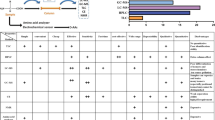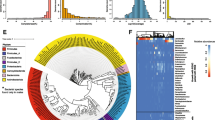Abstract
Matrix-assisted laser desorption ionization-time of flight mass spectrometry (MALDI-ToF MS) has been introduced in clinical routine microbiology laboratories. For the rapid diagnosis of urinary tract infections, culture-independent methods prior MALDI-mediated identification have been described. Here, we describe a comparison of three of these methods based on their performance of bacterial identification and their potential as a routine tool for microbiology labs : (i) differential centrifugation, (ii) urine filtration and (iii) a 5-h bacterial cultivation on solid culture media. For 19 urine samples, all methods were directly compared and correct bacterial species identification by MALDI was used as performance indicator. A higher percentage of correct MALDI identification was obtained after filtration (78.9 %) and the growth-based method (84.2 %) as compared to differential centrifugation (68.4 %). Additional testing of 76 mono-microbial specimens (bacteriuria > 105 CFU/mL) confirmed the good performance of short growth with a 90.8 % correct MALDI score, with a potentially better fit to the routine workflow of microbiology labs.



Similar content being viewed by others
References
Lockhart GR, Lewander WJ, Cimini DM, Josephson SL, Linakis JG (1995) Use of urinary gram stain for detection of urinary tract infection in infants. Ann Emerg Med 25:31–35
Devillé WL, Yzermans JC, van Duijn NP, Bezemer PD, van Der Windt DAWN, Bouter LM (2004) The urine dipstick test useful to rule out infections. A meta-analysis of the accuracy. BMC Urol 4:4. doi:10.1186/1471-2490-4-4
Cardoso CL, Muraro CB, Siqueira VLD, Guilhermetti M (1998) Simplified technique for detection of significant bacteriuria by microscopic examination of urine. J Clin Microbiol 36:820–823
Broeren MAC, Bahçeci S, Vader HL, Arents NLA (2011) Screening for urinary tract infection with the sysmex UF-1000i urine flow cytometer. J Clin Microbiol 49:1025–1029
Anhalt JP, Fenselau C (1975) Identification of bacteria using mass spectrometry. Anal Chem 47:219–225
Welker M, Moore ERB (2011) Applications of whole-cell matrix-assisted laser-desorption/ionization time-of-flight mass spectrometry in systematic microbiology. Syst Appl Microbiol 34:2–11
Dubois D, Grare M, Prere MF, Segonds C, Marty N, Oswald E (2012) Performances of the Vitek MS matrix-assisted laser desorption ionization-time of flight mass spectrometry system for rapid identification of bacteria in routine clinical microbiology. J Clin Microbiol 50:2568–2576
Grabe M, Bartoletti R, Bjerklund-Johansen TE, Çek HM, Pickard RS, Tenke P, Wagenlehener F (2014) Microbiological and other laboratory findings. Guidelines on Urological Infections, European Association of Urology, 9
Ferreira L, Sánchez-Juanes F, González-Avila M, Cembrero-Fuciños D, Herrero-Hernández A, González-Buitrago JM, Muñoz-Bellido JL (2010) Direct identification of urinary tract pathogens from urine samples by matrix-assisted laser desorption ionization-time of flight mass spectrometry. J Clin Microbiol 48:2110–2115
Ferreira L, Sánchez-Juanes F, Muñoz-Bellido JL, González-Buitrago JM (2011) Rapid method for direct identification of bacteria in urine and blood culture samples by matrix-assisted laser desorption ionization time-of-flight mass spectrometry: intact cell vs. extraction method. Clin Microbiol Infect 17:1007–1012
Wang XH, Zhang G, Fan YY, Yang X, Sui WJ, Lu XX (2013) Direct identification of bacteria causing urinary tract infections by combining matrix-assisted laser desorption ionization-time of flight mass spectrometry with UF-1000i urine flow cytometry. J Microbiol Methods 92:231–235
Burillo A, Rodríguez-Sánchez B, Ramiro A, Cercenado E, Rodríguez-Créixems M, Bouza E (2014) Gram-stain plus MALDI-TOF MS (matrix-assisted laser desorption ionization-time of flight mass spectrometry) for a rapid diagnosis of urinary tract infection. PLoS ONE 9:e86915
Kӧhling HL, Bittner A, Muller KD, Buer J, Becker M, Rubben H, Rettenmeier AW, Mosel F (2012) Direct identification of bacteria in urine samples by matrix-assisted laser desorption/ionization time-of-flight mass spectrometry and relevance of defensins as interfering factors. J Med Microb 61:339–344
DeMarco ML, Burnham CA (2014) Diafiltration MALDI-TOF mass spectrometry method for culture-independent detection and identification of pathogens directly from urine specimens. Am J Clin Pathol 141:204–212
Idelevich EA, Schüle I, Grünastel B, Wüllenweber J, Peters G, Becker K (2014) Rapid identification of microorganisms from positive blood cultures by MALDI-TOF mass spectrometry subsequent to very short-term incubation on solid medium. Clin Microbiol Infect 20(10):1001–1006. doi:10.1111/1469-0691.12640
Yan Y, Meng S, Bian D, Quinn C, Li H, Stratton CW, Tang YW (2011) Comparative evaluation of Bruker Biotyper and BD phoenix systems for identification of bacterial pathogens associated with urinary tract infections. J Clin Microbiol 49:3936–3939
Acknowledgments
We gratefully acknowledge Valérie Coste and Nadia Piga from the bioMérieux sample bank team for the samples supply contact, also Professor Thierry Delair for reviewing the manuscript and Maud Arsac for support in data processing.
Conflict of interest
The authors (except A. Lesenne and A. Richez) are employees of bioMérieux, a company creating and developing infectious disease diagnostics, and in particular the VITEK® MS system involved in this study. No further potential conflicts of interest relevant to this article are reported.
Author information
Authors and Affiliations
Corresponding author
Rights and permissions
About this article
Cite this article
Veron, L., Mailler, S., Girard, V. et al. Rapid urine preparation prior to identification of uropathogens by MALDI-TOF MS. Eur J Clin Microbiol Infect Dis 34, 1787–1795 (2015). https://doi.org/10.1007/s10096-015-2413-y
Received:
Accepted:
Published:
Issue Date:
DOI: https://doi.org/10.1007/s10096-015-2413-y




